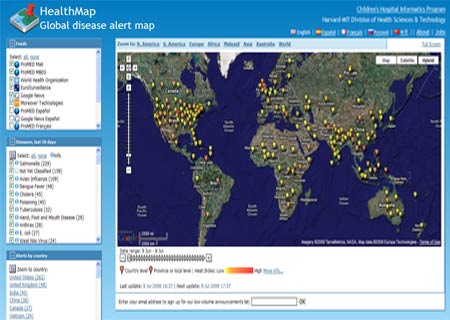In the recent past we reported how internet and web as a whole improved people’s health and life. This time again, a new invention from researchers at the Children’s Hospital Boston and Harvard Medical School will change your relationship with the Internet for better.
Optimistic about the use of Internet for discussing health topics on forums, listservs, informative online news on disease outbreaks, the researchers have launched a real-time, automated data-gathering gathering system named as HealthMap.
HealthMap optimizes the usefulness of the Internet by gathering and organizing all the possible helpful health information and then disseminating it.
“Web-based electronic information sources,†say John Brownstein and colleagues from the HealthMap project, “can play an important role in early event detection and support situational awareness by providing current, highly local information about outbreaks, even from areas relatively invisible to traditional global public health efforts.â€
There are always some barriers that pose challenges for a good work done by some good people. HealthMap too faces challenges of information overload and difficulties in distinguishing “signal from noiseâ€. However, the brilliant researchers have found a solution to overcome these difficulties by creating a HealthMap Project (www.healthmap.org).
The researchers describe this project as a “multistream real-time surveillance platform that continually aggregates reports on new and ongoing infectious disease outbreaks.†The system organizes reports in various ways one of which includes creating disease maps and what the researchers describe as the “situational awareness windows.â€
Brownstein and his team, backing the use of new media and unconventional sources of surveillance, say that these media can “facilitate early outbreak detection, increase public awareness of disease outbreaks prior to their formal recognition, and provide an integrated and contextualized view of global health information.â€
This project is described in this week’s edition of PLoS Medicine.

